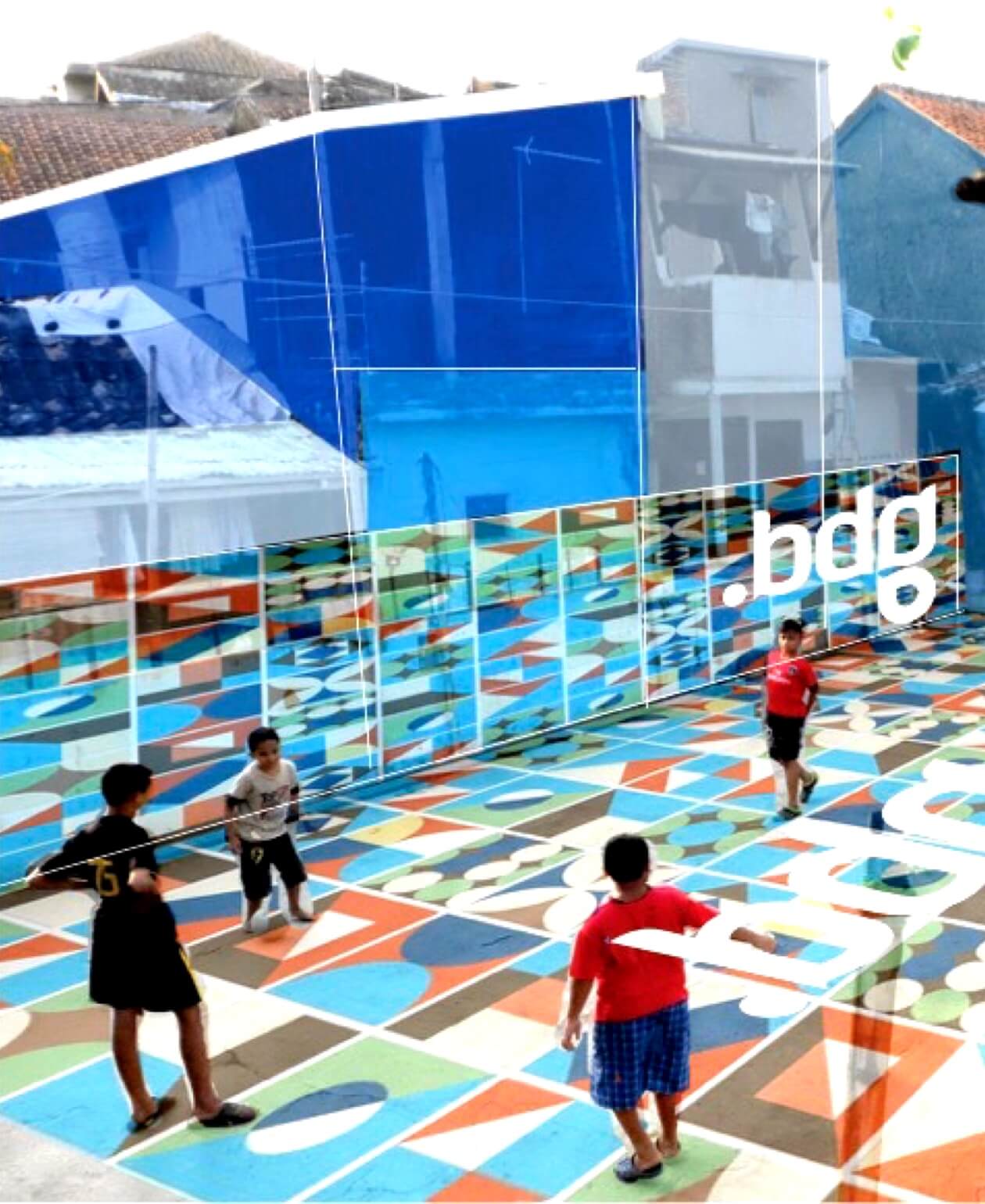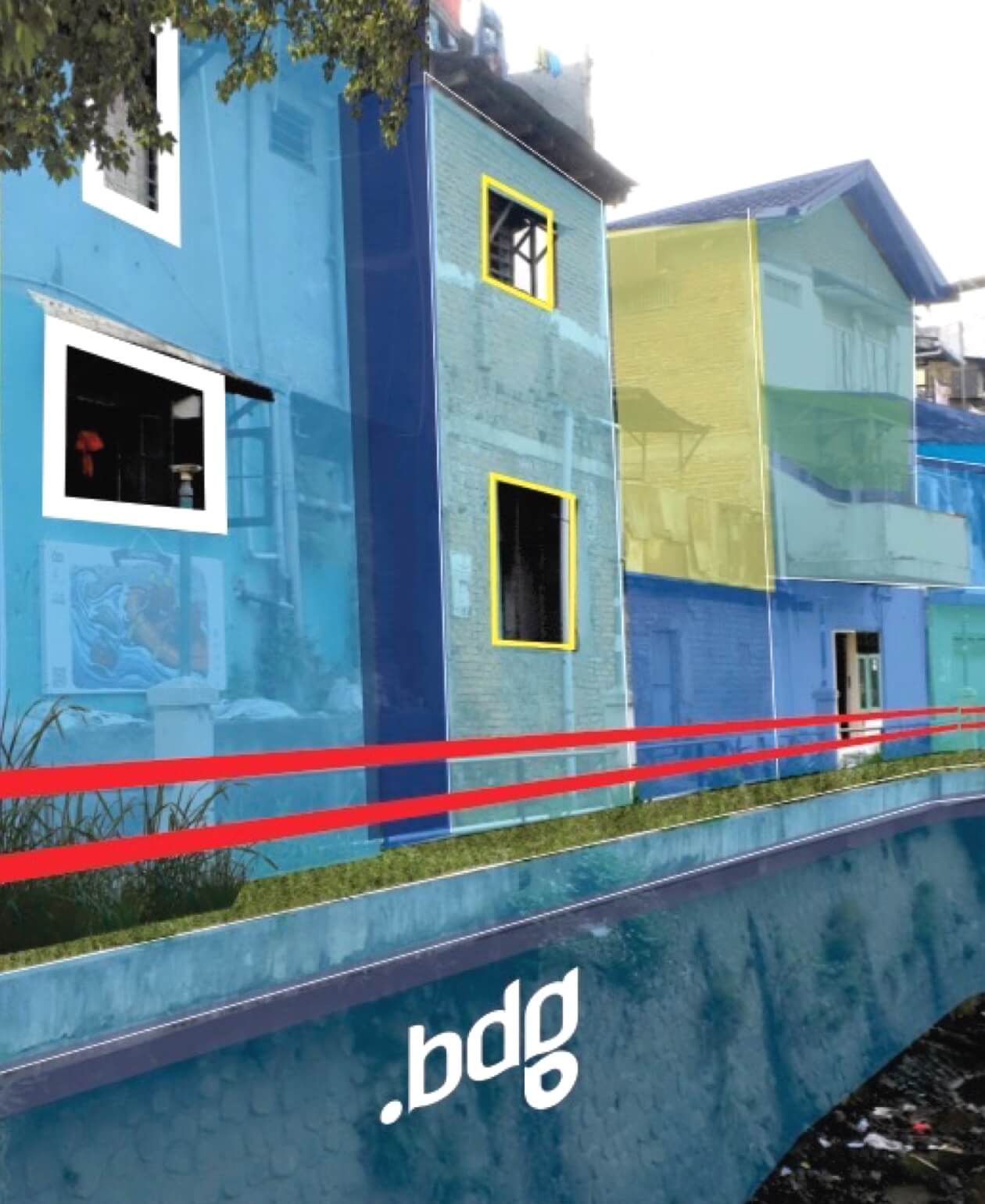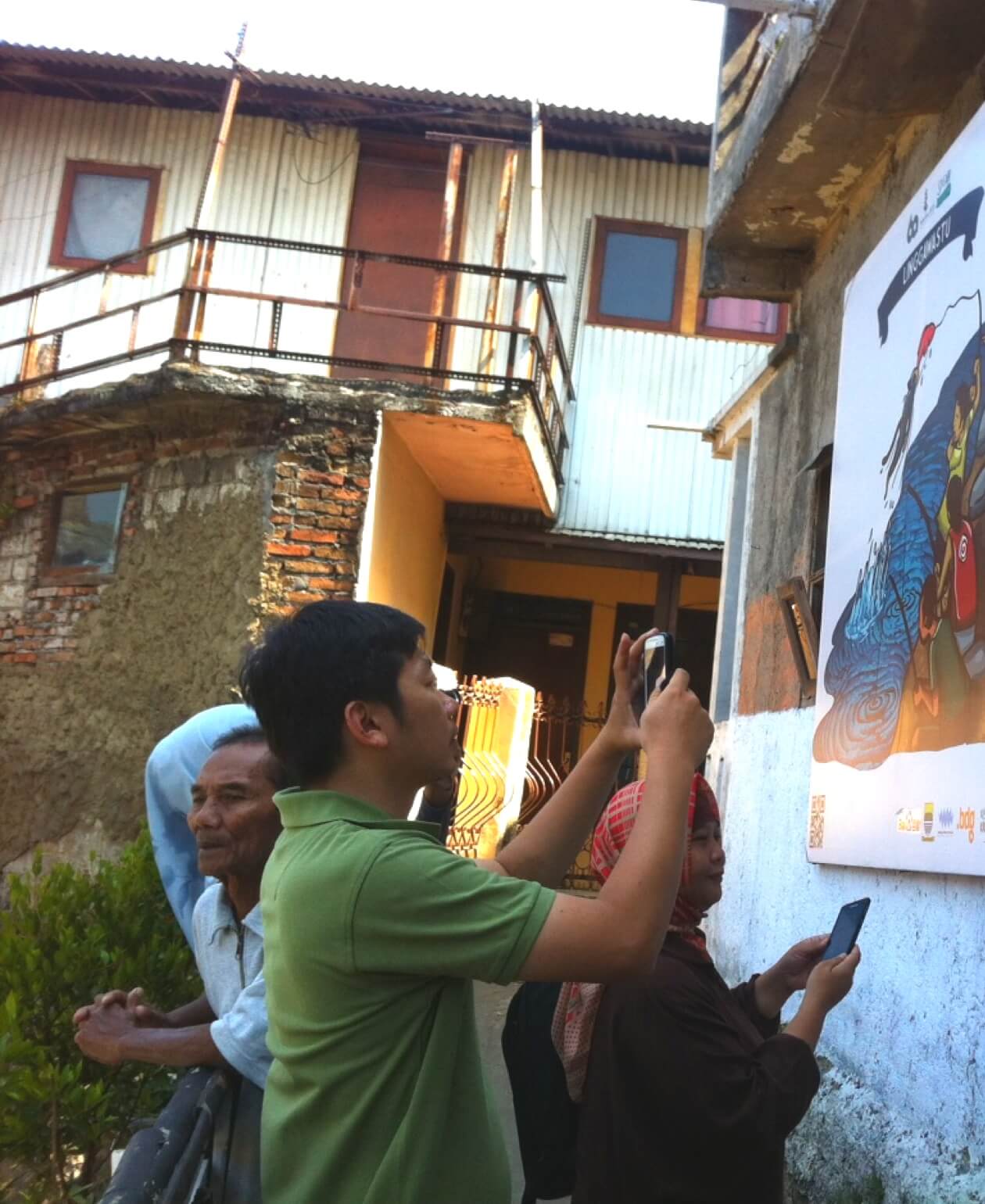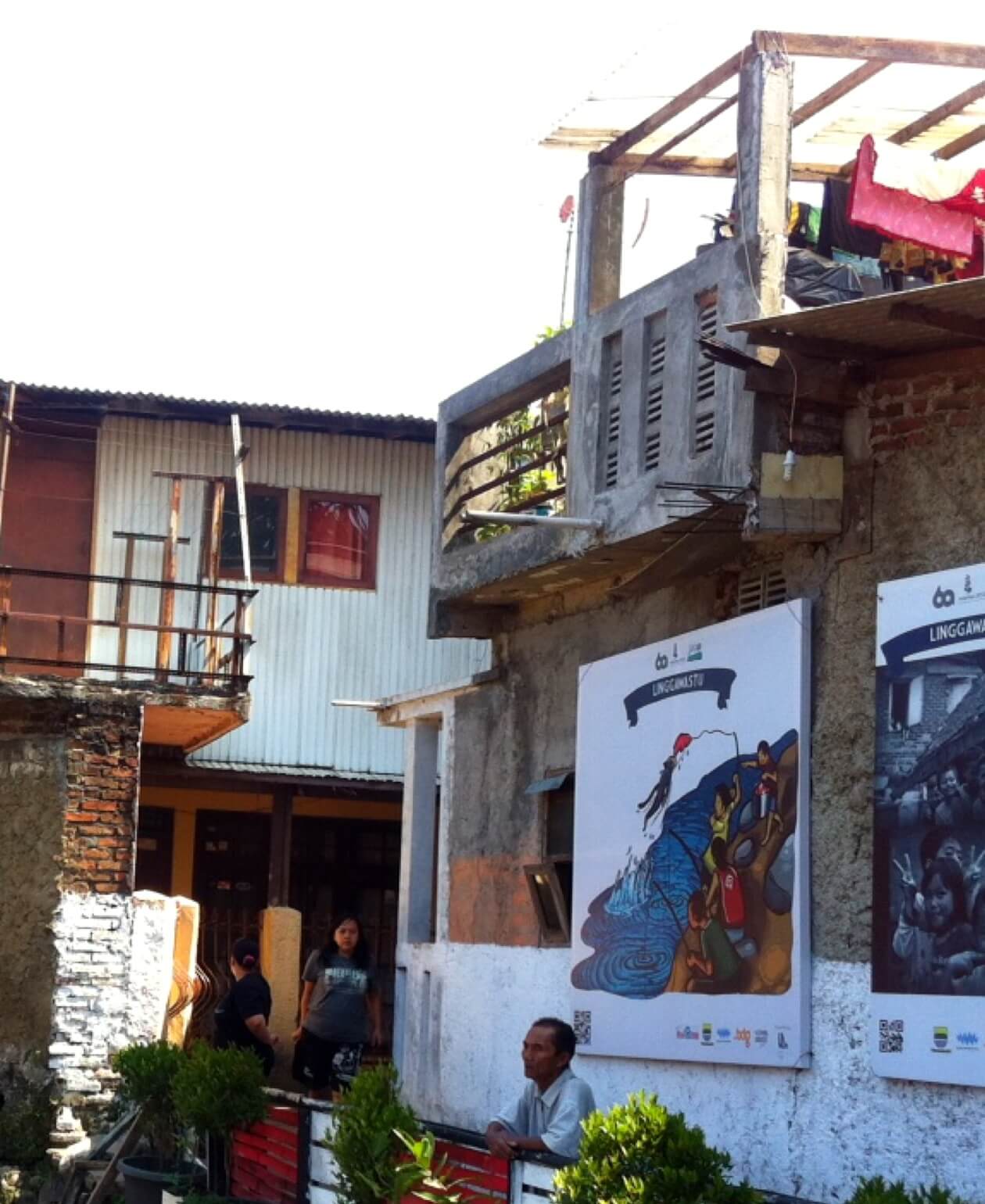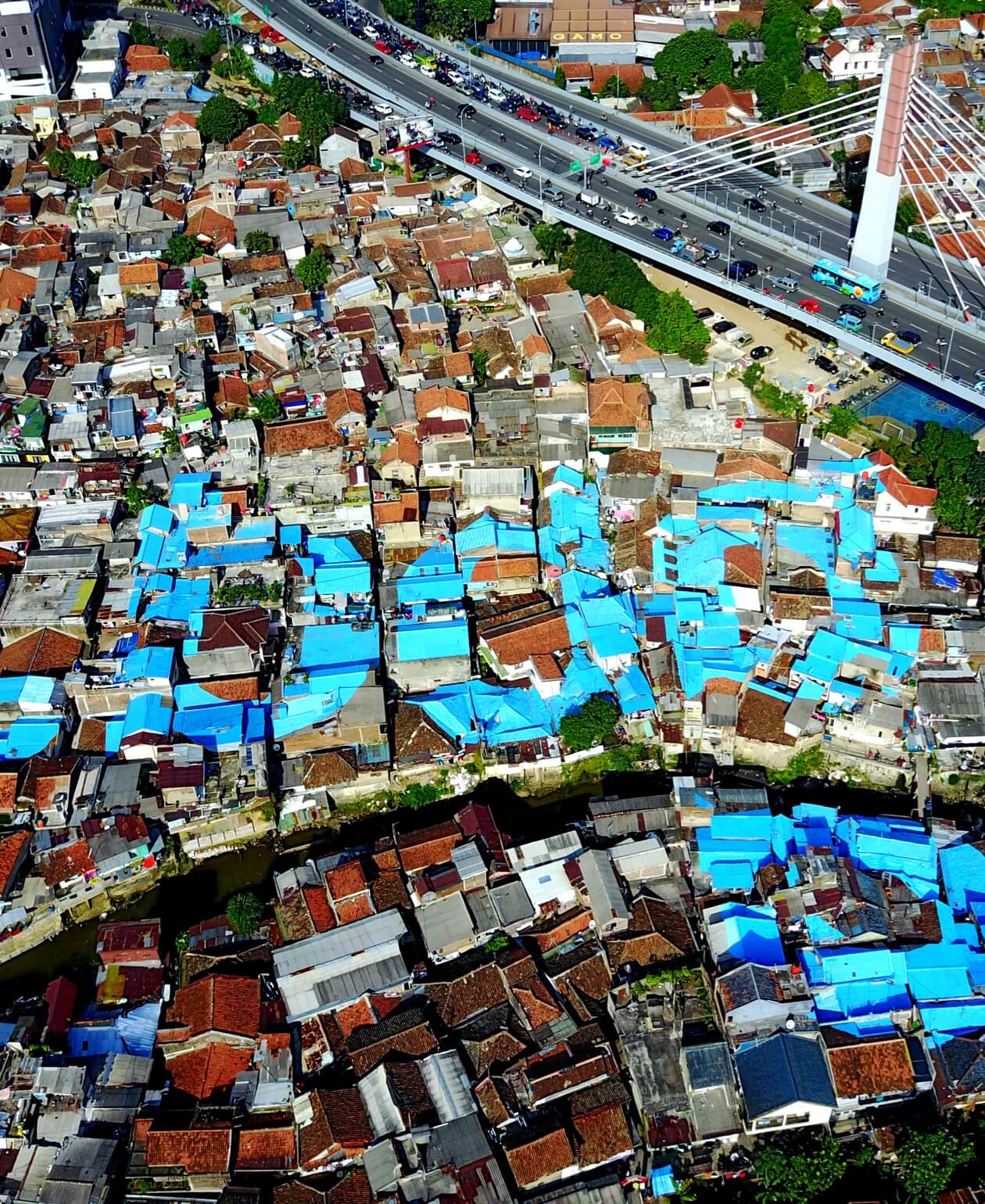Airborne.bdg

Finalists
Tita Larasati"Sabilulungan" garbage bank product development (2013~2014)
"Simpul Goes to Kampung": themed workshop activities for underprivileged local children (2013)
"Sasab.bdg": urban game for teenagers similar to ‘treasure hunt’ within the area (2015)
About Project
Airborne.bdg is the highlight of a series of projects implemented by the Bandung Creative City Forum (BCCF) of Linggawastu, an area with a high concentration of slums located next to the overpass that serves as the main entrance to Bandung City.
The BCCF began in 2013 as a project to improve the welfare of low-income residents who live in the city’s most heavily populated areas. Its objective is to conduct bottom-up test projects in diverse areas (design, creativity, park greenery, streams, public art, collective urban narrative, etc.).
We began a product development project (including branding, packaging, and storytelling) that creates products using materials from a garbage bank, which is operated by local women. Product design was facilitated by design majors from Bandung Institute of Technology, with completed products displayed and sold in cooperation with the Bandung City Craft Council.
We also conducted social mapping of this region for several years together with anthropologists, designers, and local residents. Efforts were made to improve residents’ quality of life through children’s workshops (arts and crafts, science, etc.) conducted by student volunteers and the Sasab.bdg urban game project.
“Airborne.bdg” signifies both the Bandung City brand (.bdg), which has been painted onto the buildings (which stand 40 meters above ground), and our conviction that creativity is “airborne.” To paint the rooftops of approximately 150 buildings of varying height, a combination of intangible (designers and residents) and tangible (drones) methods were used. Through such efforts, residents began to form bonds with one another, and people started to recognize the need to improve their neighborhood’s environment.
A bottom-up initiative through a multi-pronged approach, a strategic design innovation project based on the reuse of waste in the Indonesian slums of Bandung.
